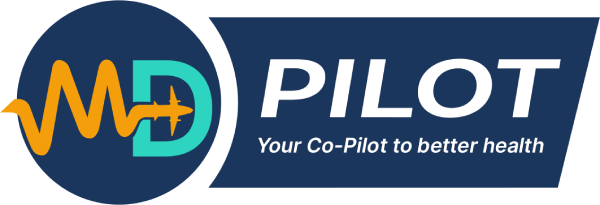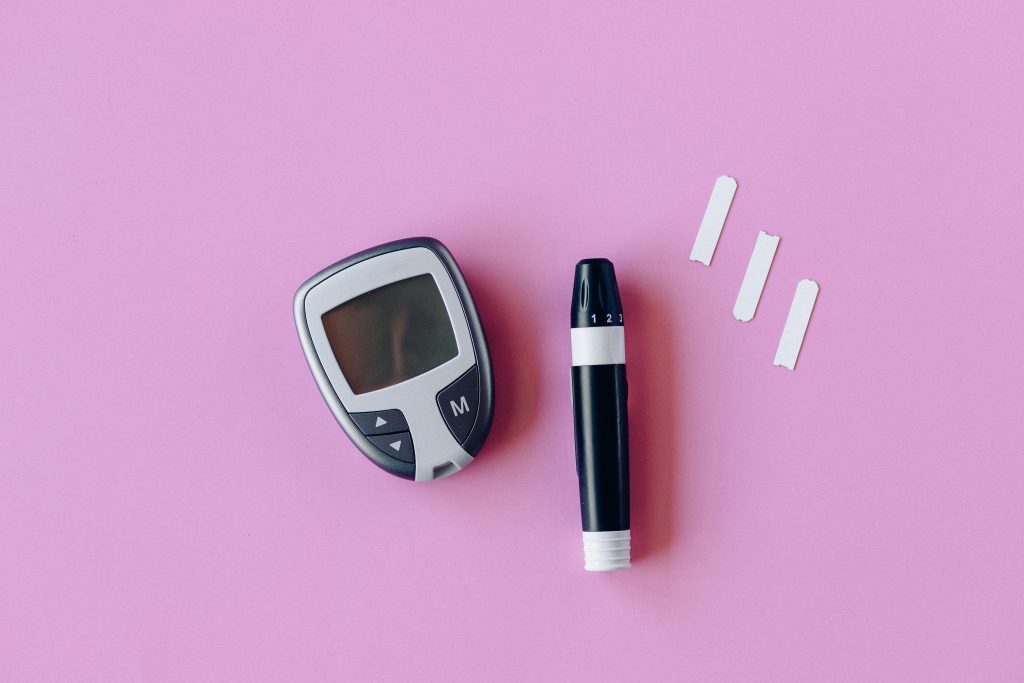Table Of Contents
-
Key Highlights
- How Do GLP-1 Patches Really Work?
- Reviewing the Evidence: Do GLP-1 Patches Help with Weight Loss?
- Microneedle GLP-1 Patches: The Future of Drug Delivery?
- Safety, Side Effects, and Regulatory Status
- GLP-1 Patches vs Injectables: Comprehensive Comparison
- How to Safely Integrate GLP-1 Patches into Weight Loss Plans
-
Frequently Asked Questions
-
Conclusion
-
References
The weight loss landscape has been revolutionized by GLP-1 receptor agonists like Ozempic and Wegovy, leading to remarkable results for millions. Now, GLP-1 patches are trending as a potential needle-free alternative, promising the same appetite-suppressing benefits without injections. But do these patches actually deliver on their promises?
Recent social media buzz, particularly on TikTok and Reddit, has propelled GLP-1 weight loss patches into the spotlight. However, as Harvard T.H. Chan School of Public Health researchers warn, the reality behind these trending products is more complex than viral videos suggest. Most commercially available patches are supplements containing herbal ingredients, not actual GLP-1 medications.
This comprehensive guide examines the science behind GLP-1 patches, distinguishes between supplement patches and legitimate pharmaceutical microneedle technology, and provides evidence-based insights to help you make informed decisions about these emerging weight loss tools.
Key Highlights
- Two Distinct Categories: Most OTC “GLP-1 patches” are supplements with herbal ingredients, while true pharmaceutical patches use microneedle technology to deliver actual GLP-1 drugs.
- Limited Scientific Support: No robust clinical evidence supports the effectiveness of over-the-counter supplement patches for significant weight loss.
- FDA Approval Status: As of September 2025, no commercial GLP-1 supplement patch has FDA approval for treating obesity or diabetes.
- Microneedle Innovation: Clinical microneedle GLP-1 patches show promise for monthly drug delivery but remain in research phases, not available to consumers.
- Modest Results: User-reported results from OTC patches are typically mild appetite support at best, not comparable to prescription injectable medications.
- Safety Considerations: While generally safer than injectables, supplement patches raise concerns about unregulated ingredients and deceptive marketing claims.
- Professional Guidance Essential: Healthcare provider consultation is crucial before using any GLP-1 patch product, especially for individuals with underlying health conditions.
How Do GLP-1 Patches Really Work?
Understanding GLP-1 patches requires distinguishing between two fundamentally different approaches: supplement patches and pharmaceutical microneedle patches. This distinction is crucial for setting realistic expectations and making informed decisions.
Supplement Patches: The Current Market Reality
Most commercially available GLP-1 patches fall into the supplement category. These products typically contain:
- Berberine: A plant compound with modest blood sugar effects
- Chromium: A mineral that may influence insulin sensitivity
- Green tea extract: Contains caffeine and antioxidants
- Garcinia cambogia: A fruit extract marketed for appetite suppression
These patches work through transdermal delivery, attempting to absorb ingredients through the skin. However, the bioavailability of these compounds through skin absorption is generally low and poorly studied for weight loss applications.
Pharmaceutical Microneedle Patches: The Scientific Frontier
True pharmaceutical GLP-1 patches represent cutting-edge drug delivery technology. These semaglutide patches use arrays of microscopic needles to deliver actual GLP-1 receptor agonist medications directly into the skin.
 Research Breakthrough:
Research Breakthrough:
A 2024 PubMed study demonstrated that a single 2x2cm microneedle patch could provide 4-week efficacy of semaglutide delivery in preclinical models, potentially revolutionizing diabetes and obesity treatment.
The microneedle approach offers several theoretical advantages:
- Controlled, sustained drug release over weeks
- Elimination of injection anxiety and inconvenience
- Improved patient compliance for long-term treatment
- Precise dosing equivalent to injectable formulations
The Critical Difference: Active Ingredients
The fundamental distinction lies in active ingredients. While supplement patches contain plant-based compounds with minimal research support, pharmaceutical patches deliver the same proven medications found in Ozempic, Wegovy, and Mounjaro. This difference explains why results vary dramatically between product categories.
Reviewing the Evidence: Do GLP-1 Patches Help with Weight Loss?
The Supplement Patch Reality Check
Harvard T.H. Chan School of Public Health researchers conducted a comprehensive analysis of GLP-1 supplement products and reached a sobering conclusion: over 80% of supplement-labeled GLP-1 patches reviewed in clinical analyses did not contain actual GLP-1 drugs.
University of Maryland Baltimore research summarized the evidence for supplement patches:
- No peer-reviewed studies demonstrate significant weight loss from transdermal supplement delivery
- User testimonials suggest modest appetite effects lasting days to weeks
- Placebo-level results in most consumer reporting
- High variability in ingredients and quality control
 Consumer Protection Warning
Consumer Protection Warning
NBC News investigations found that most patches marketed as “GLP-1” products do not deliver medicine transdermally and are marketed as dietary supplements to avoid FDA drug regulations. Consumer protection agencies recommend extreme caution with these products.
Social Media vs. Scientific Evidence
TikTok and Reddit discussions about GLP-1 patches often feature dramatic before-and-after claims, but these anecdotal reports lack scientific validation. Analysis of viral content reveals:
- Most dramatic results are not verified or independently confirmed
- Many users combine patches with diet changes, exercise, or other interventions
- Negative experiences are underreported in trending content
- Commercial interests often drive viral patch promotions
Comparison to Established Weight Loss Methods
| Method | Average Weight Loss | Clinical Evidence | FDA Status |
|---|---|---|---|
| Injectable GLP-1 (Ozempic/Wegovy) | 10-15% body weight | Extensive clinical trials | FDA approved |
| Supplement GLP-1 Patches | 0-3% body weight | No robust studies | Not approved |
| Diet + Exercise | 5-10% body weight | Well-established | N/A |
| Prescription Weight Loss Drugs | 5-12% body weight | Clinical trials required | FDA approved |
Microneedle GLP-1 Patches: The Future of Drug Delivery?
While current supplement patches lack strong evidence, microneedle patch technology represents a genuine breakthrough in pharmaceutical delivery. This technology could transform how patients receive GLP-1 medications, addressing key barriers to treatment adherence.
Scientific Breakthroughs in 2024-2025
Recent research published in peer-reviewed journals demonstrates significant progress:
 Clinical Milestone:
Clinical Milestone:
Advanced Therapeutics published research on single-administration self-boosting microneedle patches that successfully delivered therapeutic levels of semaglutide over 4 weeks in preclinical studies.
Key innovations include:
- Controlled Release Technology: Patches designed to release medication at optimal rates over extended periods
- Biocompatible Materials: Dissolvable microneedles that safely absorb into skin tissue
- Precise Dosing: Ability to deliver exact therapeutic doses equivalent to injections
- Temperature Stability: Formulations that remain stable without refrigeration requirements
Advantages Over Injectable Medications
Microneedle GLP-1 patches could address several limitations of current injectable treatments:
Patient Convenience
- Monthly application instead of weekly injections
- No needle anxiety or injection site reactions
- Discreet wear under clothing
- Simplified storage and handling
Clinical Benefits
- Improved medication adherence rates
- Consistent drug levels without injection peaks and valleys
- Reduced risk of injection-related complications
- Potential for lower overall side effect profiles
Current Development Status
As of September 2025, microneedle GLP-1 patches remain in clinical development phases. ClinicalTrials.gov lists several ongoing studies, but no products are available for consumer purchase. Industry experts estimate 3-5 years before FDA approval and market availability.
Future Vision: Monthly Patch vs Weekly Injection
Traditional Method: Weekly self-injection with refrigerated storage
Future Microneedle Patch: Monthly patch application with room temperature storage
Safety, Side Effects, and Regulatory Status
FDA Approval Status and Regulatory Landscape
The regulatory status of GLP-1 patches creates important distinctions for consumer safety and effectiveness expectations:
 FDA Clarity on GLP-1 Patches
FDA Clarity on GLP-1 Patches
According to the FDA Drug Safety Priorities 2024 Report, no commercial GLP-1 supplement patch has FDA approval for treating obesity, diabetes, or any medical condition as of September 2025. Products marketed as dietary supplements are not subject to the same safety and efficacy requirements as prescription medications.
Safety Profile of Supplement Patches
Current over-the-counter GLP-1 patches generally present lower safety risks compared to prescription injectables, but several concerns exist:
Common Side Effects
- Skin irritation: Redness, itching, or allergic reactions at application site
- Mild digestive effects: Some users report stomach discomfort from absorbed ingredients
- Caffeine-related effects: Jitters or sleep disruption from green tea extracts
- Variable ingredient reactions: Unpredictable responses to herbal compounds
Regulatory Concerns
Harvard researchers identified several regulatory gaps affecting consumer safety:
- Ingredient inconsistency: Supplements may contain undisclosed or variable ingredients
- Quality control issues: No standardized manufacturing requirements
- Deceptive marketing: Claims that imply drug-like effects without clinical support
- Drug interaction risks: Unknown interactions with prescription medications
Safety Considerations for Future Microneedle Patches
Pharmaceutical microneedle patches will undergo rigorous FDA evaluation, but potential safety considerations include:
- Skin penetration safety: Ensuring microneedles don’t cause infection or scarring
- Dosing accuracy: Preventing under- or overdosing from patch application variations
- Allergic reactions: Responses to patch materials or adhesives
- Drug-specific side effects: Same GLP-1 side effect profile as injectables
Who Should Avoid GLP-1 Patches?
Certain individuals should exercise particular caution or avoid GLP-1 patches entirely:
- Pregnant or breastfeeding women
- Individuals with sensitive skin or adhesive allergies
- People taking multiple prescription medications without medical supervision
- Those with history of eating disorders
- Individuals with unrealistic weight loss expectations
GLP-1 Patches vs Injectables: Comprehensive Comparison
Understanding how patch vs injection for weight loss compares requires examining effectiveness, convenience, cost, and safety across different product categories.
| Factor | Injectable GLP-1 (Ozempic/Wegovy) | Supplement Patches | Future Microneedle Patches |
|---|---|---|---|
| Effectiveness | 10-15% weight loss proven | 0-3% minimal evidence | Expected similar to injectables |
| FDA Status | Fully approved | Not approved | Under development |
| Convenience | Weekly injection | Daily patch application | Monthly patch (projected) |
| Cost | $800-1,200/month | $30-100/month | TBD (likely high initially) |
| Side Effects | Nausea, vomiting, diarrhea | Skin irritation, minimal systemic | Expected similar to injectables |
| Prescription Required | Yes | No | Yes (projected) |
When Patches Might Be Preferred
Current and future GLP-1 patches may benefit specific patient populations:
Injection-Averse Individuals
- Severe needle phobia preventing injectable use
- Previous negative injection experiences
- Preference for non-invasive delivery methods
- Concerns about injection site reactions
Lifestyle Considerations
- Frequent travelers who prefer avoiding refrigeration requirements
- Individuals seeking more discreet medication administration
- Patients with adherence challenges to weekly injection schedules
- Those preferring steady medication levels over injection peaks
When Injectables Remain Superior
Injectable GLP-1 medications maintain significant advantages:
- Proven efficacy: Extensive clinical trial data supporting weight loss claims
- Medical supervision: Prescriber oversight ensures appropriate use and monitoring
- Insurance coverage: Many insurance plans cover FDA-approved medications
- Established safety profile: Well-documented side effects and contraindications
How to Safely Integrate GLP-1 Patches into Weight Loss Plans
For individuals considering GLP-1 patches as part of their weight loss strategy, a cautious, evidence-based approach is essential. This section provides practical guidance for safe integration while maintaining realistic expectations.
Before Starting Any GLP-1 Patch
Healthcare provider consultation is crucial before beginning any appetite suppressing patch regimen. Discuss:
- Current medications: Potential interactions with supplements or future pharmaceuticals
- Medical history: Conditions that might contraindicate GLP-1 use
- Weight loss goals: Realistic expectations based on current evidence
- Alternative options: FDA-approved treatments that might be more effective
Best Practices for Supplement Patch Use
If choosing to try over-the-counter GLP-1 patches despite limited evidence:
Product Selection Criteria
- Choose products from reputable manufacturers with third-party testing
- Verify ingredient transparency and avoid proprietary blends
- Look for products with clear usage instructions and warnings
- Avoid patches making dramatic weight loss claims
Application and Monitoring
- Start gradually: Begin with shorter wear times to assess skin tolerance
- Rotate application sites: Prevent skin irritation by changing patch locations
- Track responses: Document appetite changes, side effects, and weight trends
- Set time limits: Evaluate effectiveness after 4-6 weeks of consistent use
Combining Patches with Proven Weight Loss Methods
The most effective approach combines any potential patch benefits with established weight loss strategies:
Dietary Modifications
- Focus on whole foods and appropriate portion sizes
- Maintain adequate protein intake to preserve muscle mass
- Stay hydrated and limit processed foods
- Consider working with a registered dietitian
Physical Activity
- Incorporate both cardiovascular and resistance training
- Start with manageable exercise goals and progress gradually
- Find activities you enjoy to improve long-term adherence
- Aim for at least 150 minutes of moderate activity weekly
Behavioral Support
- Address emotional eating patterns and triggers
- Develop stress management strategies
- Consider counseling or support groups
- Focus on sustainable lifestyle changes rather than quick fixes
When to Discontinue Patch Use
Stop using GLP-1 patches and consult healthcare providers if experiencing:
- Severe skin reactions or persistent irritation
- Unexpected systemic side effects
- No improvement after 6-8 weeks of consistent use
- Worsening of any underlying health conditions
 Realistic Expectations:
Realistic Expectations:
University of Maryland research suggests that individuals using supplement patches should expect modest appetite support at best, with most significant weight loss coming from concurrent diet and exercise modifications.
Frequently Asked Questions
Current over-the-counter GLP-1 patches have minimal scientific evidence supporting significant weight loss. Most contain herbal supplements rather than actual GLP-1 drugs. Harvard research shows over 80% of analyzed supplement patches don’t contain real GLP-1 medications. Users may experience mild appetite effects, but results are typically modest and comparable to placebo responses.
No commercial GLP-1 supplement patch has FDA approval for treating obesity or diabetes as of September 2025. These products are marketed as dietary supplements, which don’t require the same safety and efficacy testing as prescription medications. Future pharmaceutical microneedle patches will require FDA approval before becoming available.
Injectable GLP-1 medications like Ozempic and Wegovy deliver actual pharmaceutical drugs with proven 10-15% weight loss in clinical trials. Current supplement patches contain herbal ingredients with minimal evidence, typically producing 0-3% weight loss at best. Future microneedle patches may match injectable effectiveness but are still in development.
Supplement patches commonly cause skin irritation, redness, or allergic reactions at the application site. Some users experience mild digestive discomfort or caffeine-related effects from herbal ingredients. Future pharmaceutical patches may have similar side effect profiles to injectable GLP-1 medications, including nausea and gastrointestinal issues.
No, GLP-1 patches do not specifically target belly fat or any particular body area. Any weight loss from effective GLP-1 treatment occurs through appetite suppression and reduced caloric intake, leading to generalized fat loss throughout the body. Spot reduction is not scientifically supported for any weight loss method.
Supplement patch users report modest appetite effects within days to weeks, if at all. However, significant weight loss typically requires months of consistent use combined with diet and exercise changes. Most research suggests evaluating patch effectiveness after 4-6 weeks, though dramatic results are unlikely with current supplement formulations.
Generally, supplement patches can be safely combined with diet and exercise programs. However, consult your healthcare provider before combining patches with other medications or supplements to avoid potential interactions. The most effective approach typically combines any patch use with proven lifestyle modifications.
GLP-1 supplement patches are controversial due to lack of clinical evidence, deceptive marketing claims, and unregulated manufacturing. Many products imply drug-like effects without containing actual GLP-1 medications. Harvard and FDA researchers warn about misleading advertisements that exploit the popularity of prescription GLP-1 medications.
No microneedle GLP-1 patches are currently available for consumer purchase. These pharmaceutical-grade devices remain in clinical development and research phases. While promising studies show potential for monthly drug delivery, FDA approval and market availability are estimated to be 3-5 years away.
Supplement GLP-1 patches typically cost $30-100 per month, while prescription injectable medications cost $800-1,200 monthly without insurance. However, the lower cost of supplements reflects their unproven effectiveness. Future microneedle patches will likely be priced similarly to current injectables given their pharmaceutical development costs.
Conclusion
The current landscape of GLP-1 patches presents a tale of two technologies: promising supplement products with minimal evidence and cutting-edge pharmaceutical innovations still years from market availability. While over-the-counter patches offer an accessible, needle-free approach to weight management, the scientific evidence supporting their effectiveness remains limited.
Key takeaways for consumers include understanding that most commercial “GLP-1 patches” are herbal supplements rather than pharmaceutical products, setting realistic expectations for modest appetite effects rather than dramatic weight loss, and recognizing that FDA approval provides crucial safety and efficacy protections currently absent from supplement patches.
The future holds genuine promise with microneedle GLP-1 patch technology potentially revolutionizing how patients receive these life-changing medications. However, until these pharmaceutical-grade patches complete clinical trials and receive FDA approval, individuals seeking significant weight loss should consider proven options like prescription injectable GLP-1 medications under medical supervision.
Remember: Your weight loss journey deserves evidence-based solutions. Consult with healthcare providers to explore the most effective, safe options available today while staying informed about emerging technologies that may offer better alternatives tomorrow.
References
- Advanced Therapeutics. (2024). Single-Administration Self-Boosting Microneedle Patch for The Treatment of Obesity. PubMed.
- Harvard T.H. Chan School of Public Health. (2025). Ozempic, Wegovy inspire wave of GLP-1 supplements—but are they safe or effective?
- University of Maryland Baltimore. (2025). GLP-1 Patch for Weight Loss: Can This Trending Solution Really Help?
- U.S. Food and Drug Administration. (2024). Drug Safety Priorities 2024 Report. FDA.
- Harvard Health Publishing. (2025). GLP-1 diabetes and weight-loss drug side effects. Harvard Medical School.
- NBC News Health Team. (2025). Investigation into GLP-1 supplement patch marketing claims and regulatory oversight.
- ClinicalTrials.gov. (2025). Ongoing clinical trials for microneedle GLP-1 delivery systems. National Institutes of Health.
- Everyday Health Medical Review Board. (2025). Analysis of over-the-counter GLP-1 supplement effectiveness and safety profiles.
Disclaimer:
The information provided on MD-Pilot is for educational and informational purposes only. It is not intended as a substitute for professional medical advice, diagnosis, or treatment. Always seek the advice of your physician or other qualified healthcare provider with any questions you may have regarding a medical condition. Never disregard professional medical advice or delay in seeking it because of something you have read on this website.
Recomended Articles
View AllWeekly Health Intel
Get evidence-based health tips, latest research, and exclusive guides delivered weekly




